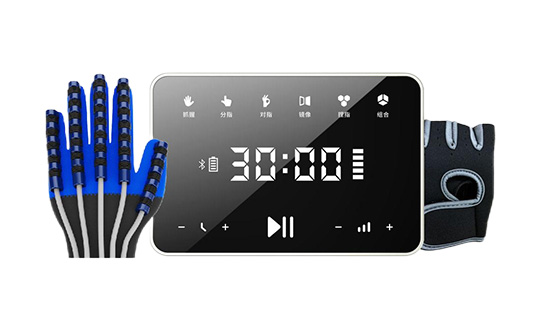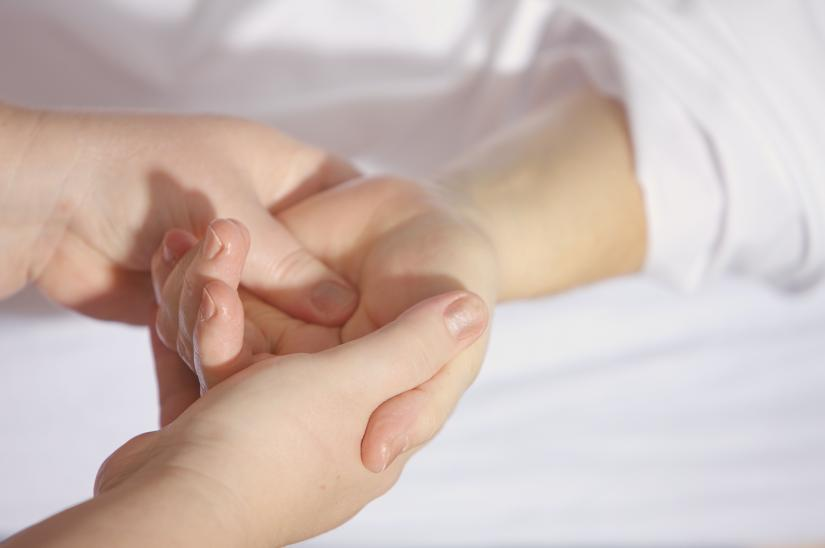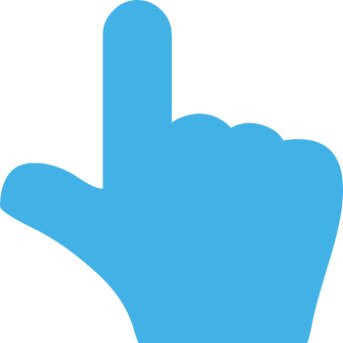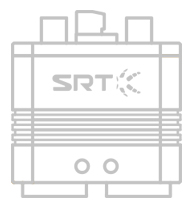01
Product introduction

The hand is the complex and delicate terminal limb of the human body, which carries the human body's movement and perception functions. Whether the hand can be used flexibly or not greatly affects the quality of life of a person. However, hand function is often damaged by musculoskeletal system damage, nervous system damage, tumors and other diseases.
As an innovative technology company based on soft robotics technology, a governing unit of the China Association of Rehabilitation Assistive Devices, and a professional supplier in the field of hand rehabilitation, SRT has developed a combination of soft pneumatic muscles and rehabilitation medicine theory to develop both gross and fine hand movements. Sports hand function rehabilitation training all-in-one machine. The all-in-one machine improves the patient's symptoms such as finger spasm and weakness through the exercise training of the affected limb, and promotes the appearance of hand separation movement. Through the mirror neuron theory, it promotes the recovery of the patient's nervous system, helps the patient improve the quality of life, and shorten the recovery period.
02
Current status of hand function rehabilitation
Hand function is an important part of activities of daily living. Due to hand dysfunction, patients are limited in activities of daily living and rely on the help of others, which greatly affects their physical and mental health. Therefore, it is particularly important to improve the patient's hand function.
Taking stroke as an example, patients with hand dysfunction are often clinically manifested as flexion contracture, the flexor muscle tension of the hand is dominant, and the interphalangeal and metacarpophalangeal joints are difficult to extend. Finger and other fine motor functions. Therefore, while relieving the symptoms of spasticity, attention should also be paid to the recovery of inter-finger coordination.

03
Pain points of traditional rehabilitation methods
At present, when clinical therapists carry out rehabilitation training for patients, they often conduct one-to-one training with patients hand in hand. This training method needs to go to a professional rehabilitation institution, but some patients in remote areas lack medical resources around them. Moreover, the therapeutic effect is more dependent on the therapist, and the cost is high; secondly, the therapist often adopts the rehabilitation mode of full-hand stretching, which makes it difficult to carry out more complex and fine training between the fingers. With the advancement of the rehabilitation process, patients need more refined and diverse training programs.

04
Innovative breakthrough
The all-in-one hand function rehabilitation training machine not only helps patients reduce the requirements for the rehabilitation environment, so that patients can carry out scientific rehabilitation training at home, and has both the gross and fine motor training of the hand. Grip training improves muscle spasms in the whole hand. Mirror training activates mirror neurons and promotes brain function remodeling. Point-finger training strengthens the effect of single-finger training. Finger pinch and pair finger training simulate daily pinching movements to improve life ability. Combination training promotes comprehensive hand rehabilitation. The portable design with a battery life of 1.5 hours without plugging in can help patients cope with different usage scenarios, and the full touch screen and user-friendly interface help patients easily complete the training.

05
Features

grip mode
The device simulates the driving mode of human muscles, and uses pneumatic technology to drive the affected hand to perform passive full-hand training.
![]()
Die-to-finger mode
Through the cooperation of the thumb and other fingers, the device stretches and flexes in sequence to help the affected hand form fine motor sensations such as pinching, holding, and picking.

pinch mode
Through the simultaneous flexion and extension of the thumb, the index finger and the middle finger, the human device helps the affected hand to form a kinematic feeling of pinching slightly larger objects, and improves the patient's ability to perform daily activities.

Split finger mode
The training equipment stretches and flexes each finger in turn, and performs fine-grained training on the fingers to promote the appearance of hand separation.

mirror mode
The device recognizes the motion signals of the unaffected hand, drives the affected hand to achieve synchronous movements of both hands, and promotes nerve recovery.

Combination mode
The main device combines grasping, finger separation, and finger pairing training to perform comprehensive passive hand training to help patients form an overall feeling from gross to fine movements.

